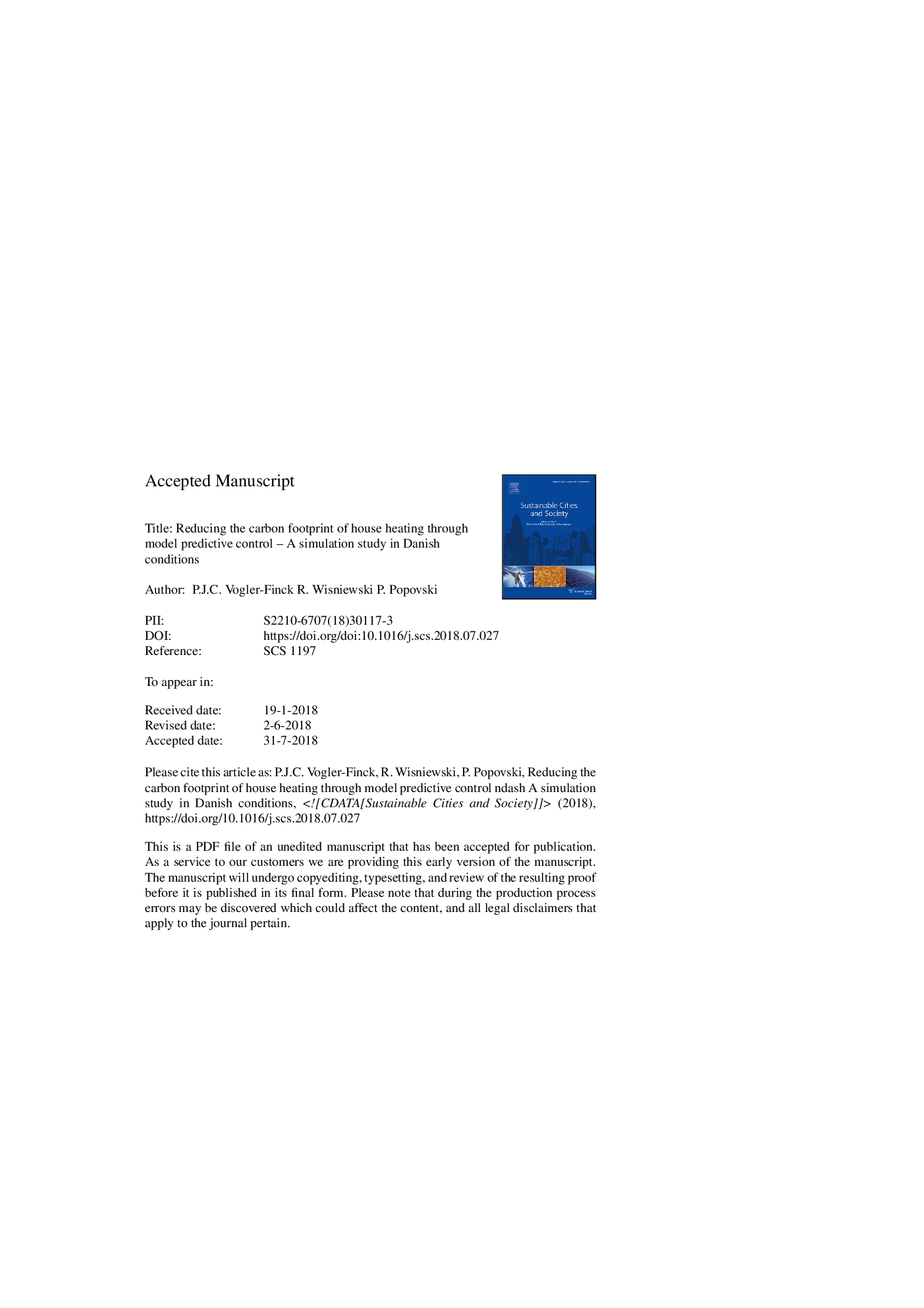| کد مقاله | کد نشریه | سال انتشار | مقاله انگلیسی | نسخه تمام متن |
|---|---|---|---|---|
| 11001299 | 1432006 | 2018 | 38 صفحه PDF | دانلود رایگان |
عنوان انگلیسی مقاله ISI
Reducing the carbon footprint of house heating through model predictive control - A simulation study in Danish conditions
ترجمه فارسی عنوان
کاهش پدیده کربن حرارت خانه از طریق پیش بینی کنترل مدل - یک مطالعه شبیه سازی در شرایط دانمارکی
دانلود مقاله + سفارش ترجمه
دانلود مقاله ISI انگلیسی
رایگان برای ایرانیان
کلمات کلیدی
رد پای کربن، گرمایش خانه تک خانه کنترل پیش بینی مدل،
موضوعات مرتبط
مهندسی و علوم پایه
مهندسی انرژی
انرژی های تجدید پذیر، توسعه پایدار و محیط زیست
چکیده انگلیسی
Around the world, electricity systems are transitioning towards renewable energy to meet humanity's climate change mitigation targets. However, in a pre-transition system, the carbon intensity of power exhibits strong variations over time, which calls for load shifting to times when its impact is lower. In this work, the case of heating in single-family houses is studied, using Model Predictive Control (MPC) to optimise multi-zone operation. Low inertia heating is used, and simulations are made upon three different insulation level using historical grid and climate data from Denmark. The results show that energy and CO2 optimisation are relevant objectives for predictive control for lowering the carbon footprint of heating, while SPOT price optimisation is comparatively undesirable. However, benefits of energy optimisation were questioned, as a well-tuned PID control might have had similar performance. Nevertheless, gains from CO2 optimisation in recent houses highlight the importance of considering the average carbon intensity of energy used, in addition to the amount of energy itself, when aiming to reduce the carbon footprint.
ناشر
Database: Elsevier - ScienceDirect (ساینس دایرکت)
Journal: Sustainable Cities and Society - Volume 42, October 2018, Pages 558-573
Journal: Sustainable Cities and Society - Volume 42, October 2018, Pages 558-573
نویسندگان
P.J.C. Vogler-Finck, R. Wisniewski, P. Popovski,
